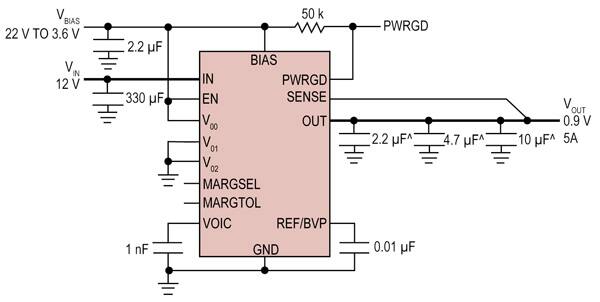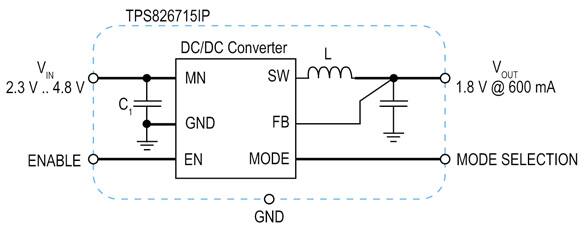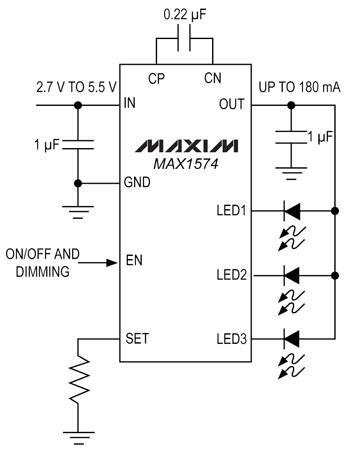Selecting the Correct Regulator for Your Application
投稿人:电子产品
2012-09-04
Today’s system board is proliferated with a variety of power supply regulators. In practice, there are three different types of voltage regulators—linear, switching, and charge pumps. While an RF circuit may need a linear power supply regulator with a minimum amount of noise and RF emission, a processor may require a highly efficient, high density switching DC-DC converter with excellent regulation properties. And a charge pump with no regulation may be sufficient to drive a string of on-board LEDs.¹
What is more, a linear regulator can only generate a voltage lower than the supply voltage, while a versatile switching regulator can step-up (boost), step-down (buck), or invert (change the polarity of) its input supply voltage. Similarly, charge pumps perform to boost, buck and invert input voltages, but with limited output-current capability.
Linear choices
As a result of these characteristics, linear regulators are recommended when the voltage of the source powering the regulator is near the regulator’s output voltage and the circuit being powered does not care about the efficiency of the regulator, but requires very low noise specifications. In the last several years, however, these devices have been further improved in noise as well as in efficiency performance, while their input voltage handling capability has been enhanced and they now feature a wider operating temperature range. Among key suppliers pushing the performance envelope of linear regulators are Exar, Linear Technology, Maxim, Micrel, ON Semiconductor, and Texas Instruments.
In fact, recent improvements have made linear regulators attractive for delivering regulated low voltages with ultra-low noise and ultra-fast transient response to the latest FPGAs and processors, whose deep submicron geometries allow them to operate from 0.9 V to 1.8 V supply rails and demand peak high current in nanoseconds. Linear’s LT3070/71 is one example of a part family addressing this challenge.
The high bandwidth of the LT3070/71 reduces the supply impedance at the point-of-load using only a few small, low ESR, ceramic capacitors (Figure 1). These linear regulators supply up to 5 A of output current with a typical dropout voltage of 85 mV and a 0.01 μF reference bypass capacitor decreases output voltage noise to 25 μVRMS.

Figure 1: The integrated linear regulator LT3070 uses only a few small, low ESR, ceramic capacitors to deliver regulated low voltage with ultra-low noise and ultra-fast transient response.
Maxim, in its tutorial #751 entitled “Linear Regulators in Portable Applications”² shows that another regulator specification critical in battery designs is quiescent current, also called "operating current" or "ground current." As noted, the lower the current value of this spec, the better the regulator performance. Maxim’s MAX1725/26 is a good example of ultra-low supply current LDOs with a maximum 4.5 µA quiescent current.
For automotive applications, usually a higher input voltage and wider temperature range are required. Micrel’s MIC5281 offers a very-wide input operating voltage range, up to 120 V DC, and supplies an output current of up to 25 mA. Plus, it features ±3 percent initial accuracy, an extremely high-power supply rejection ratio (>90 db) and ultra-low quiescent current of 6 µA. Designed to operate over a -40°C to +125°C temperature range, MIC5281 is optimized for high-voltage line transients, and provides both fixed output voltage of 3.3 V and 5.0V and adjustable output voltage of 1.27 V to 5.5 V optional.
Switch-mode regulators
Switching regulators offer several main advantages: higher conversion efficiency, simpler thermal management, step-up (boost), and negative conversion. While high frequency switching results in RF noise that is undesired, Maxim indicates that switching regulators remain popular because these devices boast excellent efficiency when subjected to many combinations of input voltages and load currents. The efficiency levels can be as high as 96 percent for both step-up and step-down switchers, although a step-down is typically more efficient. The rated efficiency for inverters is about 90 percent. Major manufacturers of linear regulator ICs are also key suppliers of switch-mode regulators.
With pressure to improve packaging density, more and more suppliers are placing switching MOSFETs, the controller IC, and passives inside a single package. MAX17083 is a step-down regulator with integrated switches that support continuous load current up to 5 A. The internal switch facilitates the circuit-board layout significantly. For low power applications, Texas Instruments’ TPS8267x is a complete synchronous step-down converter in a compact, low-profile ball-grid array (BGA) package. Its IC-like package includes the switching regulator, inductor, and I/O capacitors, so it doesn’t require any additional components (Figure 2). Likewise, Fairchild Semiconductor’s FAN5354 is a 3 MHz buck regulator that provides high efficiency over wide load currents -1 mA to 3 A.

Figure 2: Texas Instruments’ TPS8267x is a complete synchronous step-down converter in a compact, low-profile BGA package.
Charge pumps
Fundamentally, a charge pump is a voltage converter that uses capacitors as energy storage elements to create either a higher or lower voltage power source. It is a good choice for an application that requires low power and low cost, such as powering white LEDs in parallel in portable, battery-operated LCD backlight products. Figure 3 shows Maxim’s MAX1574 charge pump driving three white LEDs with regulated constant current for uniform light intensity. Its very low dropout current regulator achieves 180 mA output drive capability and high efficiency over the single cell lithium-battery input voltage range.

Figure 3: Maxim’s MAX1574 charge pump drives three white LEDs with regulated constant current for uniform intensity.
By way of comparison, charge pumps handle lower output currents than switching regulators and provide both regulated and unregulated outputs, regardless of whether they step-up, step-down, or invert voltages. When used in the inverting mode, unregulated charge pumps provide an output voltage equal to the voltage powering the device, but with opposite polarity. One good example is the Maxim MAX828.
Unlike unregulated charge pumps, regulated devices provide output-voltage levels that are not strictly dependent on the voltage level fed to them. For instance, they can create a 5 V output from a 3.3 V input. Also, because they are regulated, as the output current increases the output voltage remains essentially constant. However, the amount of current that can be drawn from these devices, including the unregulated charge pumps, is limited. Although, the upper limit is about 125 mA, there are a few parts that can handle several hundred milliamperes such as the MAX889. It should be noted, however, that the supplier does not recommend building charge pumps for large load currents.
Because charge pumps switch the capacitors connected to it, they create noise. This noise is usually of smaller magnitude than a switching regulator's noise. Product data sheets show you how to select the external capacitors needed to complete the design.
This article has discussed how to choose among the three most common power-supply regulators: linear regulators, switching regulators, and charge pumps. For more information on the products presented, use the links provided to access product pages on the DigiKey website. The Reference section that follows offers links to supportive application notes and tutorials that will also help guide engineers to making the proper choice.
References
- “Choosing the Right Power Supply IC for Your Application”, Tutorial 737, Maxim Integrated Products
- Maxim Tutorial 751, “Linear Regulators in Portable Applications".
免责声明:各个作者和/或论坛参与者在本网站发表的观点、看法和意见不代表 DigiKey 的观点、看法和意见,也不代表 DigiKey 官方政策。








